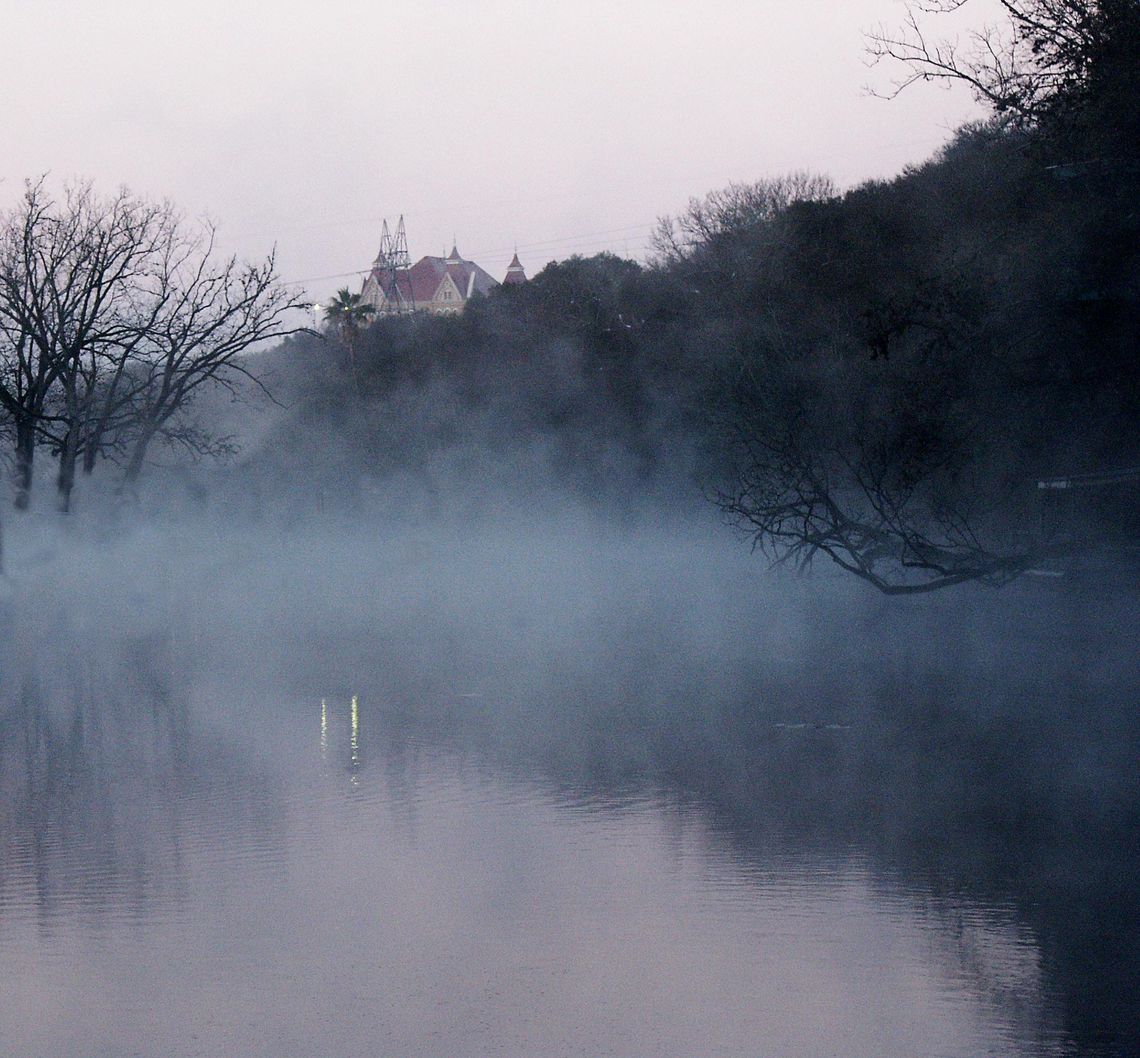In 900 years Texas State University will be the age of today’s University of Oxford. We seldom look that far ahead, but there’s no reason Texas State should not be here 900 years from now. The world has many places that old and older, and we’re more than a tenth of the way.
These thoughts come to me as I sit on the bank of the River Thames, watching row boats race where the river flows beside the University of Oxford. Though in England, I’m struck with thoughts about San Marcos, Texas State, and our river. What will they be like when Texas State is a thousand years old like Oxford?
Systems science reminds us that the present helps shape the future. If so, we’re doing pretty well I think. We’re taking good care of the river. In “The San Marcos: A River’s Story,” I recounted the severe pollution the river experienced in the past. That pollution has been cleaned up and regulations are in place to help protect the river in the future. I think about how both townsfolk and students alike enjoy the river and band together as new threats arise. And I think, yes the university will still be here helping people learn 900 years from now and the river will still be a fundamental part of life here!
Most modern cultures don’t look that far ahead, even though they have great power to shape the future. Some other cultures do, especially the people who have been here for thousands of years, or forever. While thinking far ahead may seem absurd and impractical to us, the reality of our human experience is that we probably will be here for a long time.
There are some major implications when we think in that longterm vision. Even though we may hold title, we don’t really own the land and water because they will remain long after we die. We are entrusted with their care for a short time. In fact, we are stewards, not owners. What we do or don’t do to the Earth will pass to many future generations.
Just think, your house may be here several hundred or a thousand years. There’s a wood frame house in Massachusetts that was built in 1641 and a log house in the Faroe Islands that was built a thousand years ago. We owned a little house in San Marcos where our daughter had the Blue Goat Gourmet Café and Bakery, and is now Jo’s Cafe. That house was built in 1867 out of elm wood from the river valley, perched on stacked rock foundation piers. Steve Bibby and I crawled around underneath it, shoring up the primitive foundation. That building is still there, vibrant with joy and good things to eat. It’s not going away as long as energy and love are put into it.
What does this have to do with the San Marcos River? The river is the link with our deep past and our far distant future. San Marcos is here because General Burleson built his dam and mill just below the springs. People were here millennia before because of the springs and the river. Those flowed for tens of millennia before people arrived. The springs and river will continue to flow unless we deplete the Edwards Aquifer, which we can do. The springs and river are our “canary in the coal mine” to monitor how we are treating this complex system of land and water on which we live.
It is inspiring and comforting to me to think about how long the San Marcos has flowed and how long it can continue. I am one link in that long silver chain of lives that benefit from the river. My responsibility is to be a conscious steward, a river keeper as they are called. That means I must spend time with the river, to be conscious of its health, and to do what is necessary to maintain and protect it.
When I speak of the river I don’t refer only to the water in the channel. The river is a complex system that includes its entire watershed, the aquifer that provides its spring flow, and the climate that brings rain to charge the entire system. My consciousness and responsibility for the river include how we live on the land in its watershed and what we do to the atmosphere that brings the rains.
Father Thomas Berry called himself a “geologian” because he was committed to helping us realize and understand that our relationship to Earth is basically spiritual. He wrote that we “live and order our lives” by story. He said we need a new story to help us become true and effective stewards of Earth and that our “great work” is to devise that story. To know where we are going we must know from whence we came. There is new plaque on the river trail in Ramon Lucio Park donated by the Comal Springs Chapter, Colonial Dames XVII Century. The plaque helps tell the stories of our river’s past. We can use it and the wealth of other stories about the San Marcos River to help us develop our new story.
Jim Kimmel is Geography Professor Emeritus from Texas State University. Jerry Touchstone Kimmel’s photographs illustrate The San Marcos: A River’s Story.







